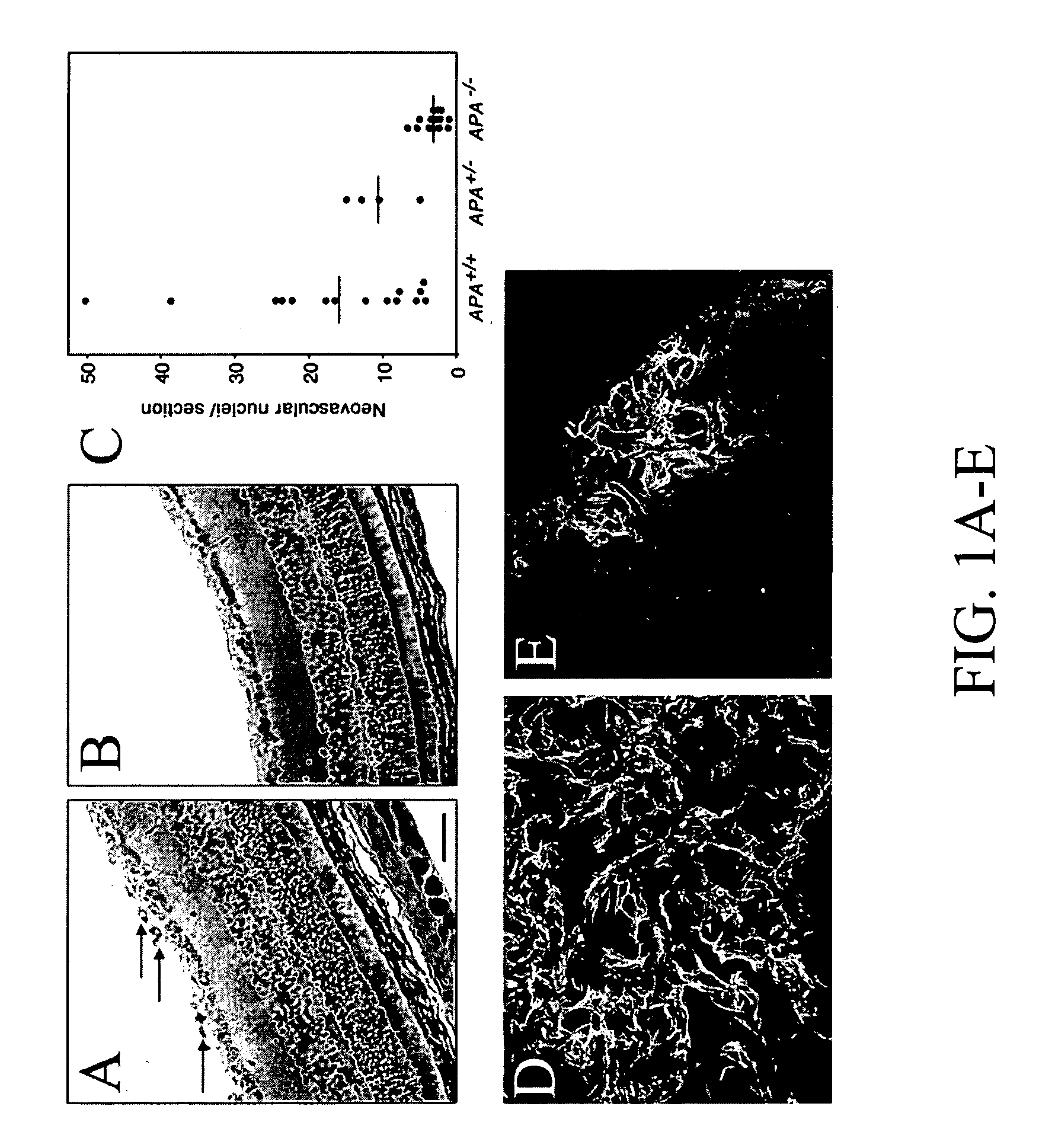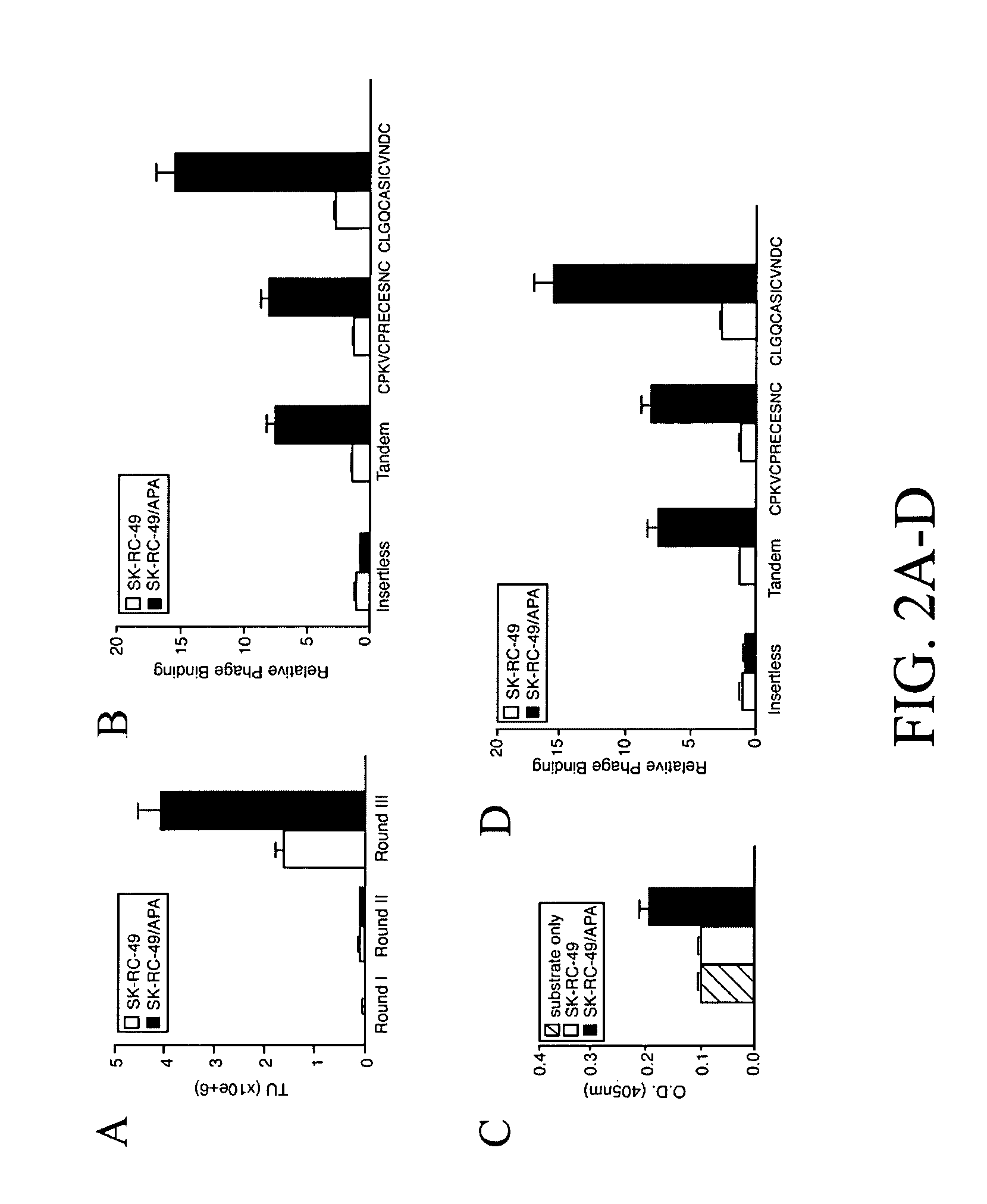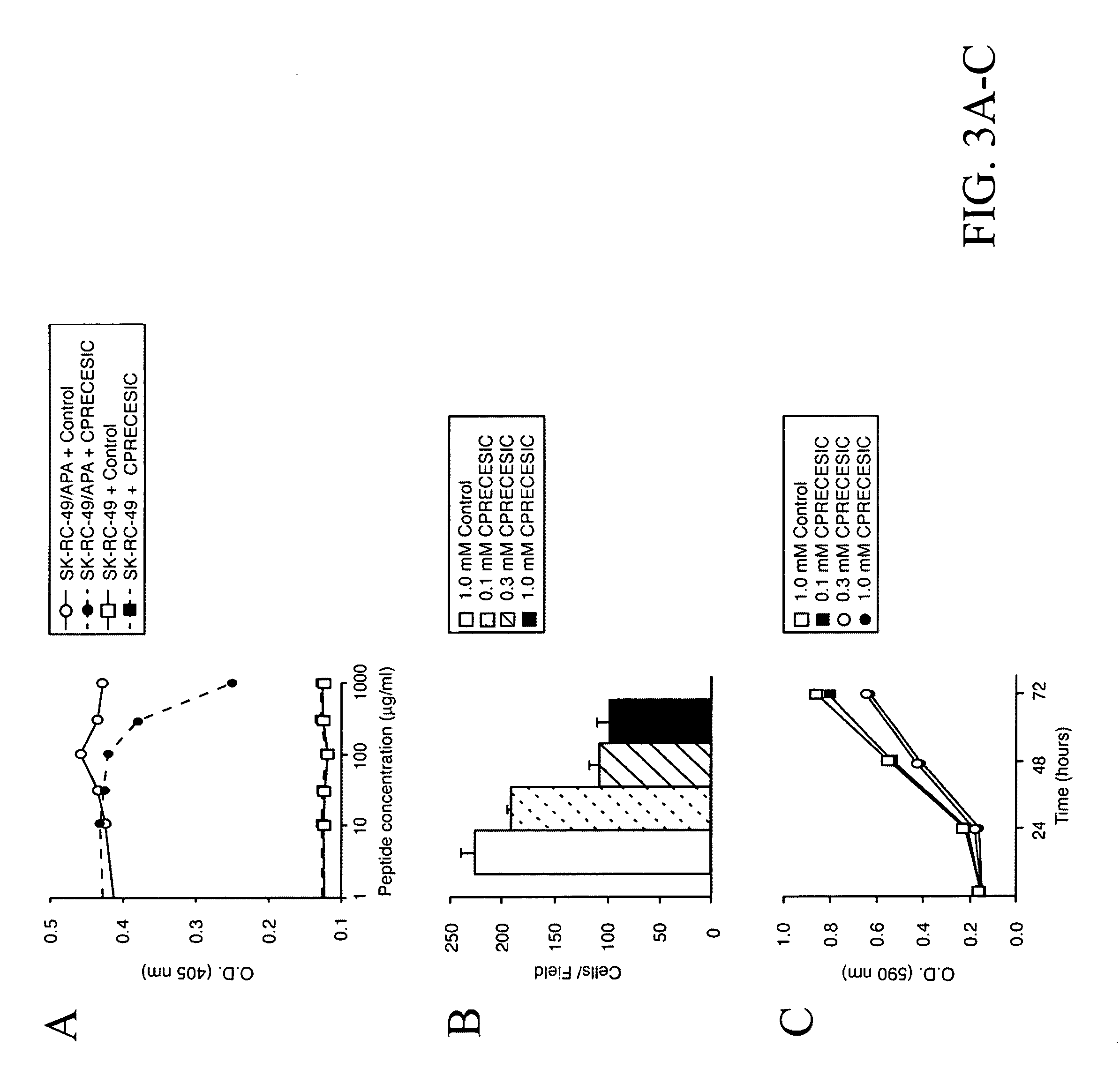Aminopeptidase a (APA) targeting peptides for the treatment of cancer
a technology of aminopeptidase and cancer, applied in the field of molecular medicine and targeted delivery of therapeutic agents, can solve the problems of significant mortality rate, and achieve the effect of increasing the efficacy and potency of treatmen
- Summary
- Abstract
- Description
- Claims
- Application Information
AI Technical Summary
Benefits of technology
Problems solved by technology
Method used
Image
Examples
example 1
Materials and Methods
[0214] Reagents
[0215] VEGF-A165, bFGF, and TGF-a were from R&D Systems (Minneapolis, Minn.) and anti-CD31 antibody from BD-Pharmingen (San Diego, Calif.). RC38 (Schlingemann et al., 1996), ASD-37, ASD-41 (Assmann et al., 1992) and PAL-E antibody (Schlingemann et al., 1985) have been described. Synthetic peptides were purchased from AnaSpec (San Jose, Calif.). Unless otherwise indicated, an unrelated synthetic peptide (sequence GACVRLSACGA SEQ ID NO:7) was used as a negative control. A phage display random peptide library displaying the insert CX3CX3CX3C (C, cysteine; X, any amino acid residue) was constructed as described (Smith and Scott, 1993).
[0216] Cell Culture
[0217] Renal carcinoma cells SK-RC-49 (Ebert et al., 1990) were stably transfected with a mammalian expression vector encoding the full-length APA cDNA (Geng et al., 1998) and HMECs stably transfected with large T (Ades et al., 1992). EF43-fgf4 cells have been described (Deroanne et al., 1997, Haji...
example 2
Targeting Peptides Specific for Aminopeptidase A (APA) and Treatments for Cancer
[0248] The realization that angiogenic vasculature is a target for intervention in cancer has long led to an interest in endothelial cell receptors associated with tumor blood vessels and their corresponding ligands. However, so far only a few such targets have been identified.
[0249] A selection system is presented in the present invention in which circulating ligands that home to specific vascular beds in vivo are isolated from a phage display random peptide library; this approach led to the identification of vascular receptors allowing for systemic targeting of blood vessels in mice and more recently in human (Arap et al., 2002; Pasqualini and Ruoslahti, 1996). Some of the targets in tumor blood vessels turned out to be membrane-bound proteinases such as matrix metalloproteinases (Koivunen et al., 1999) or aminopeptidases (Pasqualini et al., 2000) that are upregulated in tumor blood vessels. While th...
PUM
| Property | Measurement | Unit |
|---|---|---|
| pH | aaaaa | aaaaa |
| volumes | aaaaa | aaaaa |
| volumes | aaaaa | aaaaa |
Abstract
Description
Claims
Application Information
 Login to View More
Login to View More - R&D
- Intellectual Property
- Life Sciences
- Materials
- Tech Scout
- Unparalleled Data Quality
- Higher Quality Content
- 60% Fewer Hallucinations
Browse by: Latest US Patents, China's latest patents, Technical Efficacy Thesaurus, Application Domain, Technology Topic, Popular Technical Reports.
© 2025 PatSnap. All rights reserved.Legal|Privacy policy|Modern Slavery Act Transparency Statement|Sitemap|About US| Contact US: help@patsnap.com



